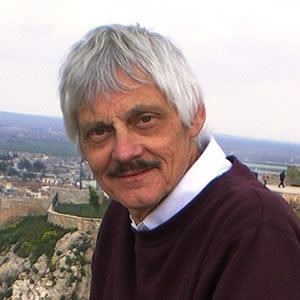Language English Role Author Name John Ashdown-Hill | Genre History Nationality British | |
 | ||
Occupation Author, historian, speaker Notable works Eleanor the Secret QueenMediaeval Colchester’s Lost LandmarksRichard III’s ‘Beloved Cousyn’ – John Howard and the House of YorkThe Last Days of Richard III and the fate of his DNARoyal Marriage SecretsThe Third Plantagenet Books The Third Plantagenet: George, Eleanor the Secret Queen: T, The Last Days of Richard III, The Last Days of Richard II, Richard III's 'Beloved Cousyn | ||
Dr john ashdown hill interview 9 1 2014 by bbc radio suffolk
Louis John Frederick Ashdown-Hill MBE FSA (born 1949), commonly known as John Ashdown-Hill, is an independent historian and author of books on late medieval English history with a focus on the House of York and Richard III of England.
Contents
- Dr john ashdown hill interview 9 1 2014 by bbc radio suffolk
- Dr john ashdown hill essex honorary graduate
- University
- Early career
- Research into the fate of Richard III
- Other historical research
- References
Dr john ashdown hill essex honorary graduate
University
Early career
Ashdown-Hill taught languages including English, French, Spanish, Italian and modern Greek and also Classical civilisation in the UK, in Tunisia, in Spain and in Turkey, but eventually gave up teaching to focus on his historical research.
Research into the fate of Richard III
In 2003 Ashdown-Hill was asked by colleagues in Belgium to seek the mitochondrial DNA sequence shared by Richard III of England and his brothers and sisters. He spent a year tracing an all female line of descent from Richard III’s eldest sister, Anne, to Joy Ibsen, a woman living in Canada. In 2005 he announced the discovery of the Mitochondrial DNA sequence of Richard III and his siblings, and in 2006 he gave a presentation on the subject of his DNA research to the Richard III Society in London, in the presence of Prince Richard, Duke of Gloucester.
In 2004 Ashdown-Hill was commissioned by the BBC to research a story that Richard III’s remains had been thrown into the River Soar. He concluded that the story was untrue.
In 2009 Philippa Langley invited Ashdown-Hill to lead a study day for the Scottish Branch of the Richard III Society, as a result of which the Looking for Richard project) was formally founded at the Crammond Inn, Edinburgh.
In August 2012, after three years of hard work persuading the authorities in Leicester, the search for the lost remains of Richard III began with the excavation of the Social Services Department car park. On the first day of the dig (25 August 2012) bones which proved to be those of Richard III were found in the area predicted by John Ashdown-Hill and by Philippa Langley. Subsequent DNA research proved that the mtDNA of the bones matched the sequence from Richard III's descendants that John had discovered in 2004.
On 5 September 2012, Ashdown-Hill had the honour of carrying the remains from the car park. He covered the box of bones with his modern copy of the House of Plantagenet Royal Standard.
In May 2014 Ashdown-Hill’s key role in the finding of Richard III’s remains was formally acknowledged by Lady Justice Hallett and her colleagues in the High Court Judgement regarding the reburial of the king’s remains.
Ashdown-Hill was awarded an MBE in the 2015 Queen's Birthday Honours for "services to historical research and the exhumation and identification of Richard III".
Other historical research
John Ashdown-Hill has also done innovative research on the Plantagenet Y-chromosome, and on the mtDNA sequence of the Princes in the Tower.
